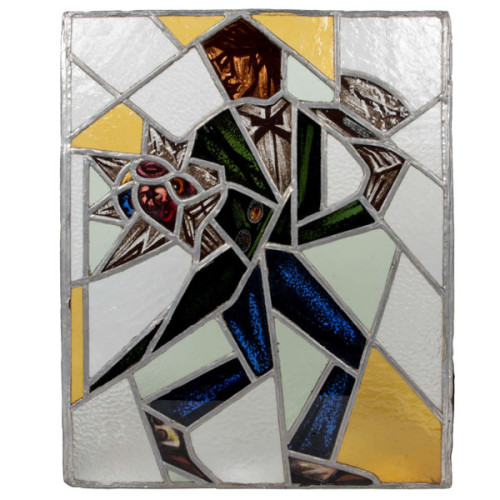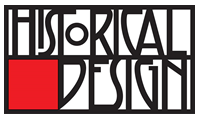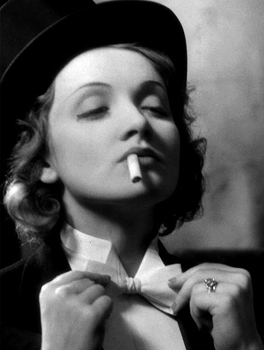Product Description
Reinhold Klaus / Carl Geyling Atelier Vienna “Man with top hat and flowers” stained glass window c. 1930



REINHOLD KLAUS (1881-1963) Vienna, Austria
CARL GEYLING ATELIER (founded 1841) Vienna, Austria
Man with tophat and flowers c. 1930
Window of stained and hand-painted leaded glass
Provenance: Estate of Carl Geyling (1814-1880), Vienna
H: 17 3/4″ x W: 14 1/2″
Reinhold Klaus studied from 1898-1902 with Alfred Roller at the Kaiserlich-Königliche Kunstgewerbeschule in Vienna. In 1914 Klaus married into the Carl Geyling family and became extensively involved with with stained glass painting. As early as 1918 Klaus worked on a stained glass window for the Siegestempel am Bisamberg in Vienna. In 1934 he became a professor of stained glass painting at the Kunstgewerbeschule, as well as creative director of the C. Geylings Erben glass painting company. Reinhold Klaus, a member of the Künstlerhaus since 1924 received many prizes and honors. He worked on commissions for the St. Veits cathedral in Prague, the St. Stephan cathedral in Vienna and many others.
Reinhold Klaus / Carl Geyling Atelier Vienna “Man with top hat and flowers” stained glass window c. 1930
Jewellers and Goldsmiths to Queen Victoria. Successors to Mortimer & Hunt on the retirement of John Mortimer but still trading until 1876. Hunt & Roskell, a firm of manufacturing and retail jewellers and silversmiths, was founded by Paul Storr in 1819, trading as Storr & Co. (1819-1822), Storr & Mortimer (1822-1838), Mortimer & Hunt (1838-1843) and then Hunt & Roskell (1843-1897). Hunt & Roskell had retail premises at 156 New Bond Street and a manufactory at 26 Harrison Street, near Clerkenwell. John Samuel Hunt, who had assisted Storr from the start, continued as a partner until his death in 1865. J. S. Hunt was then succeeded by his son, John Hunt (d.1879). Robert Roskell, formerly a watchmaker and merchant of Liverpool, joined in 1844 and remained in the firm until his death in 1888. In 1889 the firm was taken over by J.W. Benson and continued in business as Hunt & Roskell Ltd.
